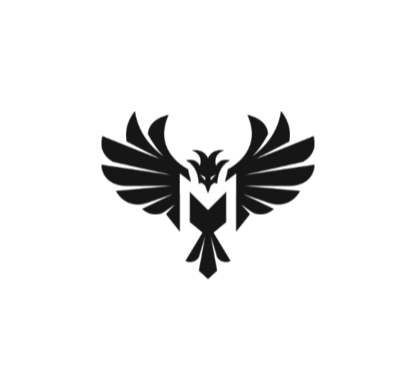
Why Spoken Arabic is the Key to Fluency (And Not MSA)
If you’ve ever started learning Arabic, you’ve probably asked yourself: Should I learn Modern Standard Arabic (MSA) or a spoken dialect?
Many learners assume that starting with MSA is the best approach since it’s the official, written form of Arabic. But here’s the truth: if your goal is to speak Arabic fluently and connect with native speakers, you should focus on spoken Arabic dialects.
In this guide, we’ll break down why spoken Arabic is the key to fluency and why learning MSA first might actually slow you down.
1. The Big Difference: MSA vs. Spoken Arabic
What is Modern Standard Arabic (MSA)?
MSA (الفصحى – Al-Fuṣḥá) is the standardized form of Arabic used in:
News broadcasts
Books, newspapers, and official documents
Formal speeches and academic settings
It’s a formal and complex language that no one speaks in daily life.
What is Spoken Arabic?
Spoken Arabic refers to the dialects (عَامِّيَة – ʿĀmmiyya) that people actually use in their daily lives. Every Arab country has its own dialect, with the most widely spoken being:
Levantine Arabic (Lebanon, Syria, Jordan, Palestine)
Egyptian Arabic (Understood across the Arab world)
Gulf Arabic (Saudi Arabia, UAE, Qatar, Kuwait)
Maghrebi Arabic (Morocco, Algeria, Tunisia)
Unlike MSA, spoken Arabic is what people actually use when chatting with friends, ordering food, or watching TV.
2. Why Learning Spoken Arabic First is the Smartest Choice
1. Native Speakers Don’t Use MSA in Conversations
If you learn MSA first, you’ll find yourself in a strange situation: you’ll understand Arabic news but struggle to order coffee in Lebanon or Egypt.
Imagine visiting France and trying to order food in Shakespearean English—that’s what speaking MSA sounds like in daily life!
2. Spoken Arabic is Easier & More Practical
Simpler grammar: No complicated case endings (which exist in MSA but not in dialects).
More natural pronunciation: Native speakers will understand you faster.
More relevant vocabulary: You’ll learn words actually used in real-life situations.
3. Faster Fluency & Better Conversations
Spoken Arabic helps you start conversations from Day 1 without getting stuck in overly formal structures. This means you’ll build confidence faster and actually enjoy speaking Arabic.
3. Common Myths About Spoken Arabic vs. MSA
Myth 1: You Need MSA to Learn Dialects ❌
Many Arabic courses teach MSA first, claiming it’s the “foundation” for all dialects. But in reality, you don’t need to learn MSA at all to become fluent in a dialect.
Myth 2: Dialects Are Just “Slang” ❌
Spoken Arabic isn’t broken or improper—it’s just the natural, everyday language of Arabic speakers. It’s as legitimate as American English vs. British English.
Myth 3: You Can’t Read or Write in a Dialect ❌
While MSA is used in books, more and more people write in dialects on social media, messaging apps, and blogs. Learning a dialect doesn’t mean you’ll miss out on reading Arabic.
4. Which Arabic Dialect Should You Learn?
If you want to speak Arabic fluently, choose a dialect based on your goals:
✅ Levantine Arabic (Lebanese, Syrian, Jordanian, Palestinian) – Great for travel, widely understood.
✅ Egyptian Arabic – The most widely understood dialect in the Arab world (thanks to Egyptian movies & media).
✅ Gulf Arabic – Best for those working in the UAE, Saudi Arabia, or Qatar.
✅ Maghrebi Arabic – Unique and essential for those visiting Morocco, Algeria, or Tunisia.
Pro Tip: If you’re unsure, start with Levantine or Egyptian Arabic, as they are the most widely understood.
5. How to Start Learning Spoken Arabic Today
Step 1: Learn the Most Common Phrases First
Memorize essential conversational phrases instead of starting with MSA grammar.
Example phrases in Levantine Arabic:
Hello – Marhaba (مرحبا)
How are you? – Kifak/Kifik? (كيفك؟)
Thank you – Shukran (شكراً)
Where is…? – Wein…? (وين؟)
Step 2: Immerse Yourself in Spoken Arabic
Listen to Arabic podcasts and music in your target dialect.
Watch Arabic TV shows & movies with subtitles.
Follow Arabic YouTubers & TikTok creators who speak dialects.
Step 3: Speak from Day One
Find a language partner or tutor to practice with.
Use language exchange apps like Tandem or HelloTalk.
Repeat phrases out loud daily (shadowing technique).
Step 4: Use a Structured Spoken Arabic Course
Learning on your own is great, but a structured course will help you progress much faster.
✅ Want to master Spoken Arabic fast? Check out our Spoken Arabic Accelerator course!
Final Thoughts: The Fastest Path to Fluency
If you want to speak Arabic fluently, focusing on a spoken dialect is the best decision you can make. Don’t waste months learning MSA if your goal is real conversations.
🚀 Ready to start? Download our FREE Lebanese Arabic Guide and take your first step toward fluency today!

Spoken Dialects LLC
600 N Broad St Ste 5
PMB 2111
Middletown, DE 19709
